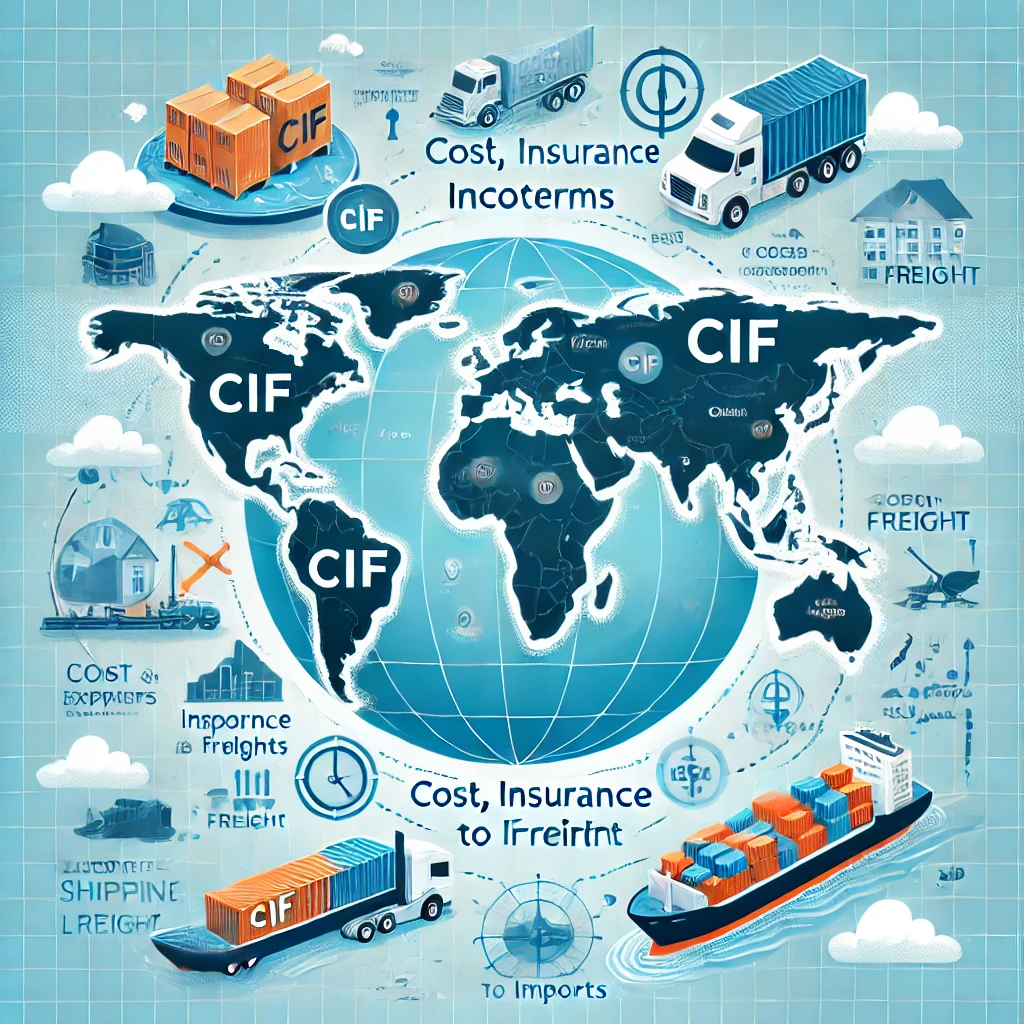A Beginner's Guide to What Is CIF
Understanding CIF and how it works is essential for importers, exporters, freight forwarders, and businesses involved in global trade.

What Is CIF (Cost, Insurance, and Freight)?
CIF is an Incoterm that defines the seller’s responsibility to cover transportation, insurance, and freight costs until the goods reach the buyer’s port of destination. However, the risk transfers to the buyer once the goods are loaded onto the vessel.
Key Components of CIF
Component | Responsibility |
Cost | Seller covers transportation costs to the buyer’s port. |
Insurance | Seller provides minimum insurance for cargo. |
Freight | Seller arranges and pays for shipping. |
Risk Transfer | Risk shifts to the buyer once goods are loaded onto the ship. |

Key Features of CIF
1. Seller Covers Shipping & Insurance Costs
- The seller pays for transportation and insurance up to the buyer’s destination port.
- Reduces initial logistics burden for buyers.
2. Risk Transfers at the Port of Origin
- The seller is responsible until the cargo is loaded onto the vessel.
- Any damage after loading is the buyer’s responsibility.
3. Required for Maritime & Inland Waterway Transport
- CIF applies only to ocean and inland water shipments.
- Not used for air, rail, or road transportation.
4. Insurance Coverage Is Limited
- The seller is only required to provide minimum insurance coverage.
- Buyers can arrange additional insurance for better protection.
5. Commonly Used in Global Trade
- Frequently used by exporters shipping goods internationally.
- Provides a structured cost breakdown for shipping agreements.
Practical Uses of CIF
1. Importing & Exporting Goods
- Helps exporters secure shipping and insurance before delivery.
- Assists importers in understanding total shipment costs.
2. Large-Scale International Shipments
- Ideal for bulk goods, industrial materials, and manufactured products.
3. Business-to-Business (B2B) Trade
- Common in corporate supply chains and procurement contracts.
4. Trade Compliance & Customs Documentation
- Ensures compliance with international trade regulations.
5. Reducing Buyer’s Logistics Responsibility
- Buyers prefer CIF when they lack direct shipping expertise.

Advantages and Disadvantages of CIF
Advantages | Disadvantages |
Simplifies logistics for buyers – seller arranges shipping & insurance. | Higher costs – sellers may charge extra for freight & insurance. |
Predictable shipping expenses for budgeting. | Limited insurance coverage – buyers may need additional coverage. |
Reduces buyer’s paperwork & coordination efforts. | Risk transfers early – buyer is responsible after cargo is loaded. |
Standardized trade practice in global shipping. | Less control over carrier selection – seller arranges transport. |
CIF vs. Other Incoterms
Incoterm | Seller’s Responsibility | Buyer’s Responsibility |
Seller covers shipping & insurance; risk transfers once loaded onto the ship. | Responsible after loading, must handle import customs. | |
FOB (Free on Board) | Seller delivers goods to the vessel. | Buyer handles freight, insurance, and risk from the port of origin. |
EXW (Ex Works) | Seller makes goods available at their premises. | Buyer handles full shipping process and costs. |
DDP (Delivered Duty Paid) | Seller covers all transport costs, insurance, and import duties. | Buyer only receives the goods. |
When to Use CIF?
- Best for buyers who want the seller to handle shipping and insurance.
- Useful when importing bulk goods from overseas suppliers.
- Recommended for businesses unfamiliar with global shipping logistics.
- Not suitable for buyers who want full control over transportation and insurance.
Conclusion
Cost, Insurance, and Freight (CIF) is a widely used Incoterm in global trade, allowing sellers to arrange shipping and insurance while buyers assume risk once cargo is loaded.
By understanding CIF responsibilities, advantages, and limitations, businesses can make informed decisions about international shipping and choose the right Incoterm for their needs. Whether you are a manufacturer, importer, or logistics professional, CIF can simplify trade agreements and improve supply chain efficiency.
